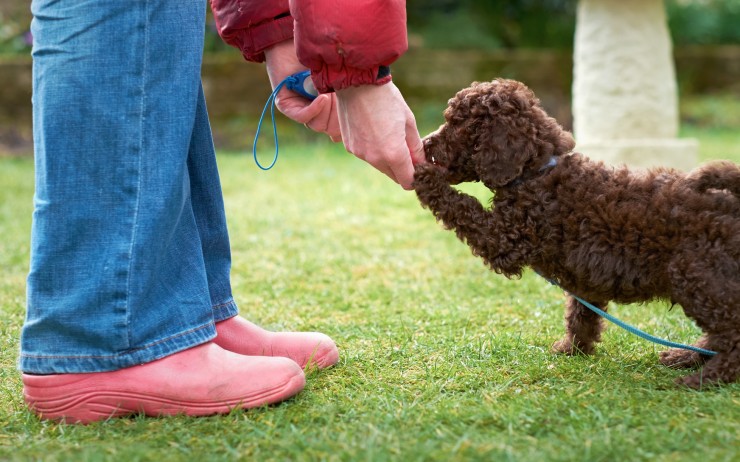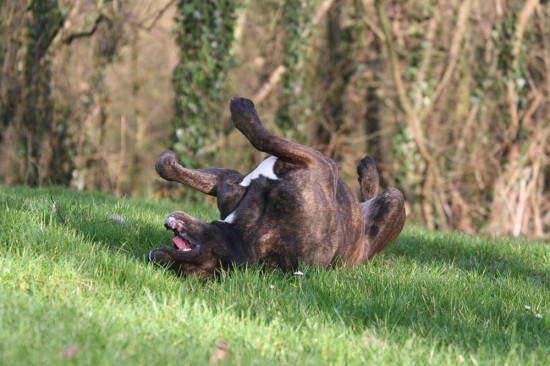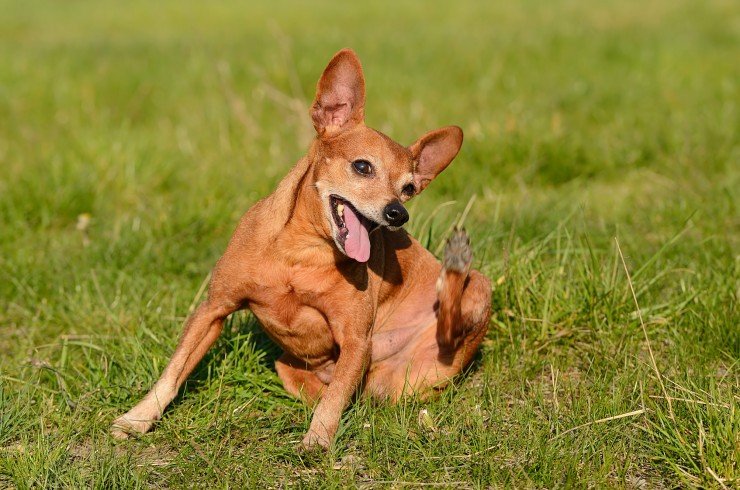
Dogs have not traveled far along the evolutionary road since the time they hunted and killed for food. In fact, some breeds are still selectively bred for their tendency to chase or stalk prey and at least capture, if not kill and/or eat them.
Notable among these are the Terriers, Dachshunds, sighthounds and various hunting breeds. It is no wonder then, that pet dogs occasionally succumb to their ancestral tendency, even without special training.
Dogs are often inadvertently trained to kill. For example, many dog owners have urged their pets (sometimes playfully) to chase cats, squirrels and stray dogs, and are often horrified when their dogs bring home the neighbor's Teacup Poodle as a trophy of the chase.
Sometimes other animals, usually cats, have "trained" dogs to become killers. These animals do this unknowingly by sitting on fences, rooftops, in trees or beyond fences, tantalizing the dog from a safe vantage point.
After enough of this teasing, the dog becomes sufficiently frustrated to attack an animal when the opportunity presents itself.
Dogs that kill other animals are usually, but not necessarily, of the excitable type and react aggressively or dominantly to other species or smaller dogs.
The killing of smaller dogs or cats by larger dogs is usually the case in urban areas. However, when dog packs operate as hunting groups, much larger animals become the prey, sometimes even people.
Most dogs that have killed people, either by themselves or in packs, select children as their prey. Child killings (especially those committed by lone dogs) have usually occurred at or within the dog's "territory," or have involved a child who screamed shrilly when first approached or knocked down.
A small percentage of dogs appears to be stimulated in the most primitive way by the screaming of any animal: their reaction is to kill that animal. Wild canines have killed members of their own pack that cry out after they have become trapped or are injured.
Dogs that kill other animals should be differentiated from those with a fighting problem. Most dog fights end before either of the combatants is seriously injured.
These episodes rarely result in the death of either dog. Predatory attacks aimed at killing the prey animal are deliberate, with the fangs aimed at the base of the prey's neck just above the shoulders. If the prey is on its back, the soft flesh of the throat or belly is attacked.
A predatory attack also usually includes violent shaking of the victim. Rarely does a domestic dog actually eat its kill, though some that prey on chickens and other fowl tend to do so more often that cat or dog killers.
 Five More Dog Training And Handling Mistakes To Avoid
Five More Dog Tra
Five More Dog Training And Handling Mistakes To Avoid
Five More Dog Tra
 The Secret Language Behind Five Common Dog Behaviours
The Secret Langua
The Secret Language Behind Five Common Dog Behaviours
The Secret Langua
 Get the Best Chicken Runs to Maintain a Healthy and Fit Flock
Get the Best Chicken Runs to Maintain a Healthy and Fit Fl
Get the Best Chicken Runs to Maintain a Healthy and Fit Flock
Get the Best Chicken Runs to Maintain a Healthy and Fit Fl
 Will Changing My Dogs Food Stop Their Itching?
Will Changing My
Will Changing My Dogs Food Stop Their Itching?
Will Changing My
 Indications That Your Cat’s Teeth Are Bothering Them
Indications That
Indications That Your Cat’s Teeth Are Bothering Them
Indications That
Copyright © 2005-2016 Pet Information All Rights Reserved
Contact us: www162date@outlook.com